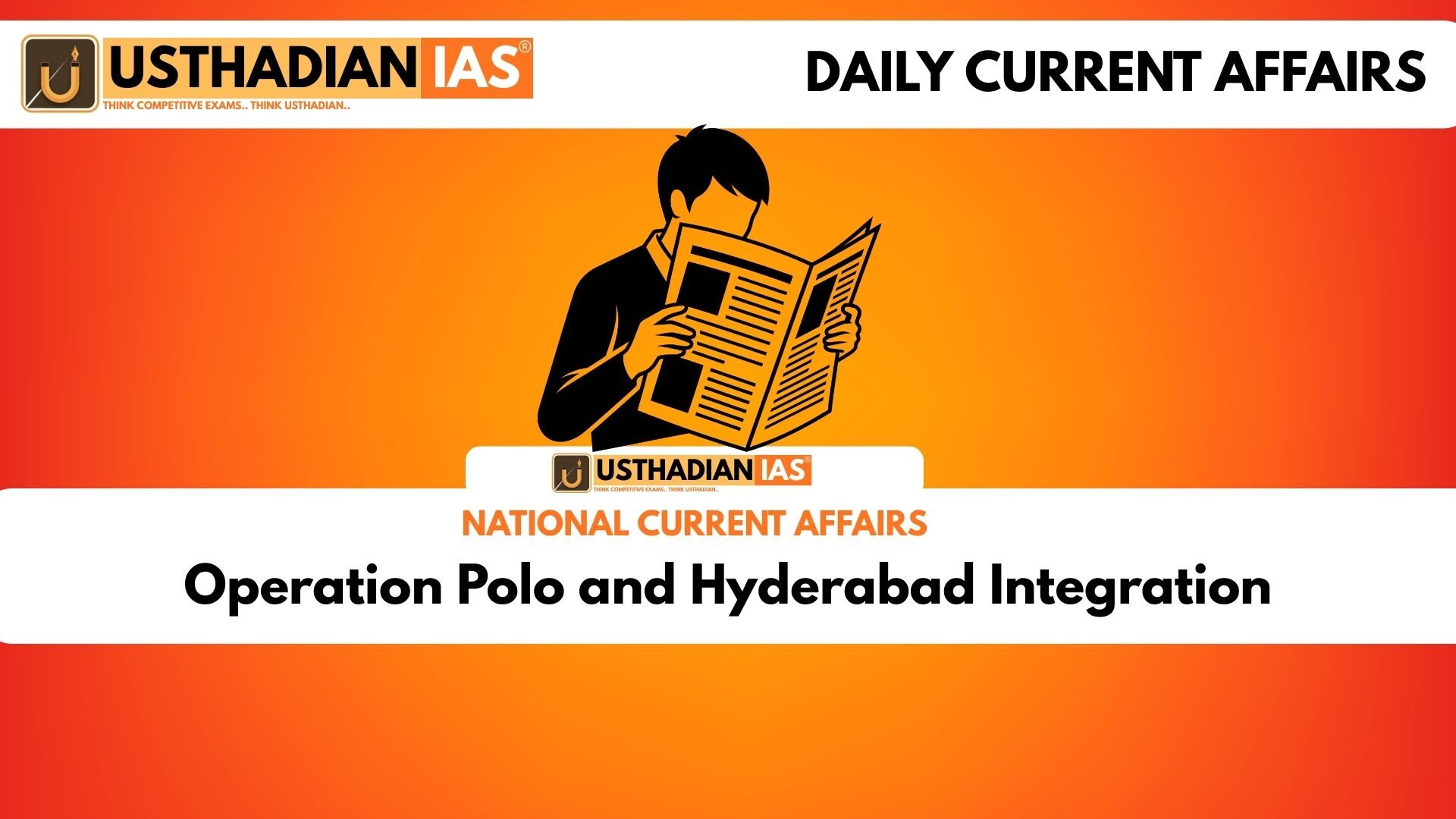Background of Hyderabad
Operation Polo and Hyderabad Integration: At the time of India’s independence in 1947, Hyderabad was the largest princely state ruled by Nizam Mir Usman Ali Khan. It covered nearly 80,000 square miles with a population of around 16 million, mostly Hindus speaking Telugu, Kannada, and Marathi. The Nizam sought independence, alarming Indian leaders because Hyderabad’s central location threatened national unity.
Static GK fact: Hyderabad was among the three princely states, along with Junagadh and Kashmir, that initially resisted joining India.
The Nizam’s Stand
The Nizam was among the richest rulers in the world, known for his vast fortune. He avoided the Chamber of Princes, pursued direct relations with Britain, and even considered joining Pakistan. In November 1947, he signed a Standstill Agreement with India to maintain status quo. However, his reluctance to merge deepened tensions.
Internal Unrest
Hyderabad saw a strong peasant revolt, led by the Andhra Mahasabha and the Communist Party, demanding land reforms and equality. Opposing them, the Ittihad-ul-Muslimeen under Kasim Razvi organized the Razakars, a paramilitary force notorious for violence and communal suppression. Their actions escalated the crisis.
Static GK Tip: The Razakars were disbanded officially after Hyderabad’s integration in 1948.
India’s Decision for Action
Sardar Vallabhbhai Patel, India’s Home Minister, considered Hyderabad’s independence a direct threat to sovereignty. Negotiations failed, and growing Razakar violence forced the government to act. Patel pressed for decisive military intervention, while Prime Minister Jawaharlal Nehru reluctantly agreed.
Execution of Operation Polo
On 13 September 1948, the Indian Army launched Operation Polo, often called a “Police Action.” Under Major General JN Chaudhuri, two infantry brigades, an armoured brigade, and the Air Force struck Hyderabad forces. Within four days, the Nizam’s army was defeated. On 17 September 1948, the Nizam surrendered, marking Hyderabad’s accession to India.
Static GK fact: Operation Polo was the first major military action of independent India, lasting only five days.
Aftermath and Integration
Following surrender, the Nizam remained as ceremonial Rajpramukh of Hyderabad until 1956. Hyderabad was placed under military administration till December 1949, after which civilian rule was restored. Democratic elections in 1952 ensured complete political integration. The event symbolized the end of princely autonomy and the strengthening of India’s territorial unity.
Static GK Tip: In 1956, Hyderabad State was reorganized, and its territories merged into Andhra Pradesh, Maharashtra, and Karnataka.
Static Usthadian Current Affairs Table
Operation Polo and Hyderabad Integration:
| Topic | Detail |
| Operation Polo | Indian military action in Hyderabad, September 1948 |
| Nizam of Hyderabad | Mir Usman Ali Khan, one of the world’s richest rulers |
| Standstill Agreement | Signed in November 1947 between India and Hyderabad |
| Razakars | Paramilitary force led by Kasim Razvi supporting the Nizam |
| Indian Leadership | Sardar Vallabhbhai Patel pushed for decisive action |
| Army Commander | Major General JN Chaudhuri led the operation |
| Duration | 13–17 September 1948 (five days) |
| Result | Hyderabad acceded to India after Nizam’s surrender |
| Post-integration | Military rule till 1949, elections in 1952 |
| Reorganization | Hyderabad State merged into linguistic states in 1956 |








